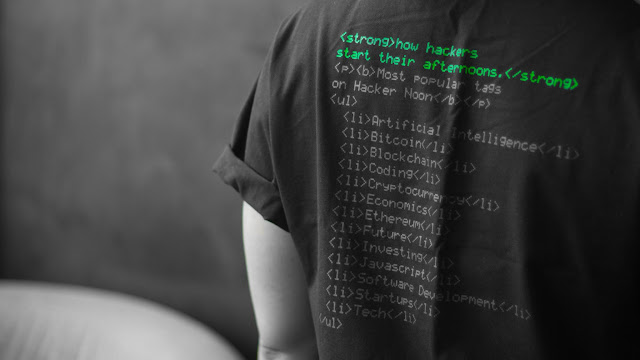Defending our computers, servers, and other assets of our organization from malicious attackers is the practice of cyber security. Cyber security protects our computers, servers, and the other assets of our company that contain sensitive data about the firm.
It encompasses a wide range of areas used to secure network security, application security, and information security, among others. It also contains plans for catastrophe recovery as well as preparations for ensuring business continuity. The training of employees is also included to protect them from social engineering or phishing attempts. Many resources help one implement cyber security, such as OWASP Top 10, testing guides, hacktivism, and much more.
Different Categories of Cyber Security
Network Security
It is primarily concerned with the protection of the organization’s network. In an organization, there are a large number of network components, such as routers and network components. Therefore, network security is concerned with the security of all network components.
Application Security
Since online apps, software, and other devices are the most vital parts of the infrastructure, application security focuses on keeping them safe from attacks. If a web application or software is compromised, that causes significant risk.
Information Security
It is primarily concerned with protecting the integrity of data and the privacy of users. Information security primarily revolves around adhering to various compliances, such as PCI-DSS or SOC2 compliance.
Basic Terminologies
Now, let’s talk about the fundamental terms used in cyber security that one should be familiar with and understand when starting their career in cyber security.
Access Control
Access control is a critical component of cyber security. It determines who has access to and uses firm data and resources and how they are used. Users are verified as being who they claim to be and have appropriate access to company data through authentication and permission procedures implemented by IT departments.
Physical access to buildings, rooms, data centers, and sensitive assets can be regulated through the use of access control systems. Access control is also utilized to prevent people from accessing any sensitive information to which they don’t need to have access.
Encryption and Decryption
It is possible to protect the confidentiality and integrity of data by using encryption techniques. When data is encrypted, it is changed from its plaintext form to a form that humans cannot read. This modified information is referred to as ciphertext.
Decryption is the process by which ciphertext is turned into plaintext. An authorized party carries it out so the recipient can read the ciphertext.
Firewall
If the application and the server are both accessible over the internet, it is necessary to prevent harmful traffic from reaching the internal components. Firewalls are used to filter network traffic, and they are becoming increasingly popular. Depending on their nature, they could be hardware or software.
By default, all traffic through the firewall is forbidden. However, to allow traffic over the firewall to the webserver or internal components, exceptions are made. Rules, filters, and access control lists (ACLs) are employed for this purpose. These rules indicate which ports are allowed to receive traffic, and they are used to block suspicious activity that originates from the internet.
Vulnerability
Systems’ vulnerabilities are the weaknesses that allow an attacker to compromise a system or an entire network by taking advantage of them. The security team manages vulnerabilities through the identification, categorization, remediation, and mitigation of security gaps.
Resources to Start a Career in CyberSecurity
Let’s talk about the resources that are needed to move forward in the field of cybersecurity. Cybersecurity is a fast-paced field, and one needs to stay updated. There are a couple of resources that you can follow to start your career in cyber security.
OWASP
The Open Web Application Security Project (OWASP) is an online community with members from a wide range of different countries. It publishes various papers, methodologies, documents, and tools that assist individuals and organizations in learning about and assessing their system’s security. In addition, it puts out two key publications that are used by enterprises and penetration testers alike. It deals with web application testing, API testing, network testing, and mobile testing.
OWASP Top 10 lists the ten most prevalent and critical vulnerabilities that can exist in a web application. Among the many items covered in its publication are questions about how to identify vulnerabilities, how they happen, and what steps businesses should take to minimize the risk.
They also have a publication known as the OWASP cheat sheet—a compendium of vulnerabilities, a detailed description of each vulnerability, and instructions on how to fix them.
OWASP Testing Guide
The OWASP Testing Guide is the most comprehensive resource available to a security analyst or penetration tester for performing vulnerability assessments. It offers a thorough list of vulnerabilities, including information on how to test for them, why they arise, and how they can be remedied to protect the business.
This document is updated regularly to include new vulnerabilities and the testing methodology used to discover them. As a result, it serves as a one-stop resource for anyone interested in learning about vulnerability assessment.
Cyber Security News
It is essential to stay informed about what is going on in the cyber security industry. TheHackerNews and BleepingComputer are two websites that you can turn to for recent developments in the field. They cover a wide range of topics, including new exploits, hacking attempts, and emerging technologies available on the market.
Conclusion
Since cyber security is a constantly evolving field, we must regularly educate ourselves to stay ahead. The materials listed above are sufficient for entry-level work. But, if you want to advance further in your profession, you must develop a practice of studying and seeking out additional resources on your own.
There is a great deal to cover and understand, and changing technologies place an increased strain on the learner. Therefore, it is important to keep yourself up to speed on a daily basis.
